 Vicki Hollett, author of the Tech Talk series, gives her thoughts on the types of activities that work for Technical English students – and gives you a few to try out!
Vicki Hollett, author of the Tech Talk series, gives her thoughts on the types of activities that work for Technical English students – and gives you a few to try out!
Business and Technical English share a lot of similarities. They’re both task oriented and English for getting things done. But if I had to sum up Business English in one word, it would be ‘purposeful’. It’s about people, their plans and their desires to achieve things. And if I had to sum up Technical English in one word, it would be ‘practical’. It’s less about people and more about identifying and solving problems with things.
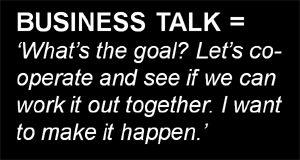

So what kinds of classroom activities go down well in classes of engineers and Technical English students? Let me illustrate:
It’s the height of the French Revolution and the tumultuous crowd roars as three men are led to Madame la guillotine. First up is an English teacher. ‘Any last words?’ they ask as they stick his head in the machine. ‘No’ he replies as the newly sharpened blade begins its inexorable fall. But then, it judders to a halt. The crowd is perplexed, but fate has spoken. The teacher is spared and free to go. So the second man steps up and he’s a training manager. There’s thunderous applause from the crowd. He has no last words either and once more the blade jams just above his neck. The crowd goes crazy, but again he is free to go. The third man is an engineer and as he’s marched towards the guillotine, he takes a careful look. ‘Any last words?’ they ask. ‘Why yes, I think I can see the problem you’re having here. You see that little nail that’s sticking out of the wood up there…”
And there you have it. There’s something about solving problems that appeals to techie minds. You might want to try the joke on engineers and technicians in your classes. My guess is they’ll like it because they’ll identify with the last guy. Practical activities that involve fixing and solving problems are generally winners.
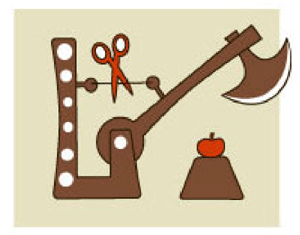
Fixing stuff
It was a hot afternoon in the Technical English classroom. My students had been on the go in the workshop since six or seven that morning and my class was an extension to their working day. But I was confident. I had a picture for them to work on and you can’t beat a good picture in a techie class.
It was a window-closing machine that I’d sketched for practice in explaining how things work.
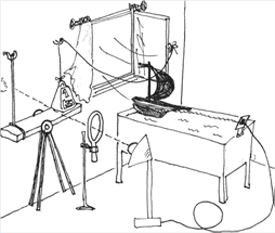
The wind blows the boat across the tank of water, which presses a switch to turn on a light that is focussed witha magnifying glass to burn through some string, which makes the weight drop and close the window. There was just one problem. I’d designed a machine that wouldn’t work. If you look closely, when the string breaks the pivot tips the wrong way.
In other classes, it probably wouldn’t have mattered. ‘Well you get the idea, let’s just imagine’, I tried. That was a bad idea. In a techie class, technical accuracy is important. Really important. There was consternation amongst the group and one student, Manfred, couldn’t be placated. A heated discussion broke out in their native tongue and he just wasn’t having it. ‘OK, then let’s have a quality meeting’, I said. ‘Tell me how to fix it’.
Now that is a challenge to give an elementary level class, but I was desperate. And on my side was the fact that they really wanted to explain it. We labelled it the ‘window-will-always-stay-shut-machine’. More than one solution emerged, and somehow we got to the bottom of the problem. I can’t thank that class enough because they taught me a valuable lesson: making stuff work is core to Technical English.
Designing machines that work is a great skill, and sadly one I lack. But I think I might have a talent for designing ones that don’t work. Perhaps your students will enjoy trying to fix these machines. Can you work them out? Let me know.
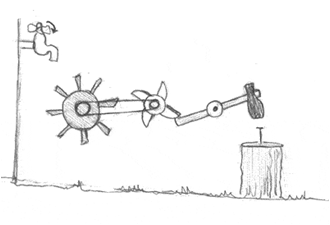
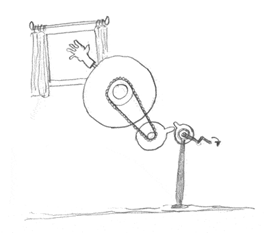
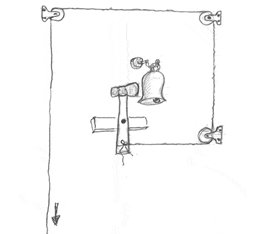
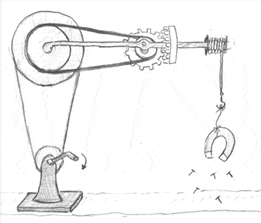
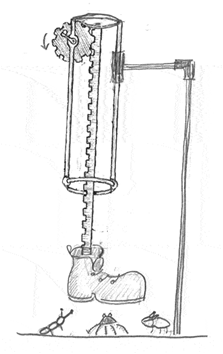


Great ideas. In a lot of English classes, the actual objectives aren’t necessarily to give the students new language tools, but rather to push them to use the knowledge they already have in new ways. I think activities that really target the problems they enjoy solving are great ways to do this. (I’m specifically thinking of lessons with adult professionals who maybe don’t have the time to reinforce new structure with hours of homework.)
Jeremy
blog.stuartmillenglish.com
[…] 1. OUP have kindly posted something I wrote on problem solving activities for technical English here. […]
Hi Vicki
I think you are on to something. This is great conversation generator material for engineers and scientists. Getting them to describe how these machines work (whether they work or not) will challenge their spoken and written English in ways regular ELT will never give them.
Dave Volek
Jeremy and Dave, thank you so much for stopping by and taking the time to comment. Yes, it’s essentially a task based learning activity and the focus is on getting a job done – in this case fixing those machines.
As you say Jeremy, making the learning enjoyable is important. Technical English students are often busy people, receiving language training during a long working day. Their education hasn’t followed a linguistic path and I think they frequently learn a lot more if they can relax and have fun during lessons.
[…] OUP ELT Global / Vicki Hollett: Activities for techies […]